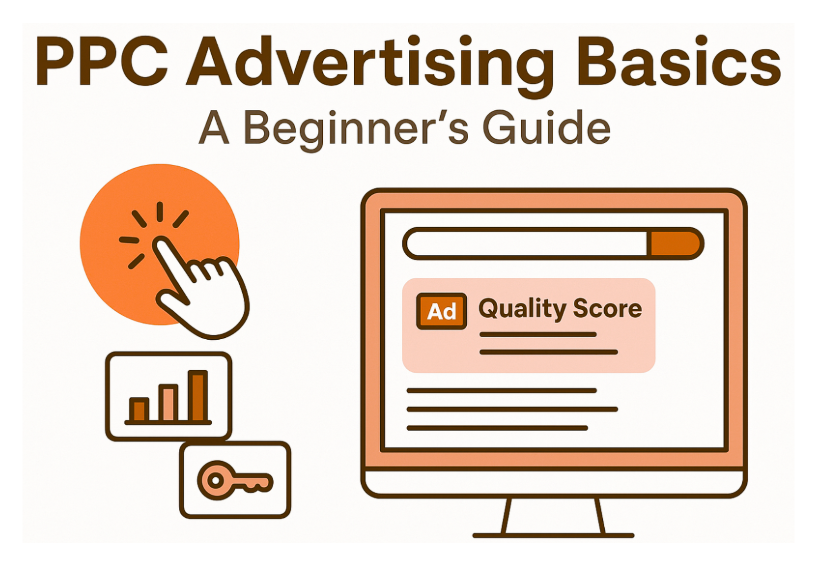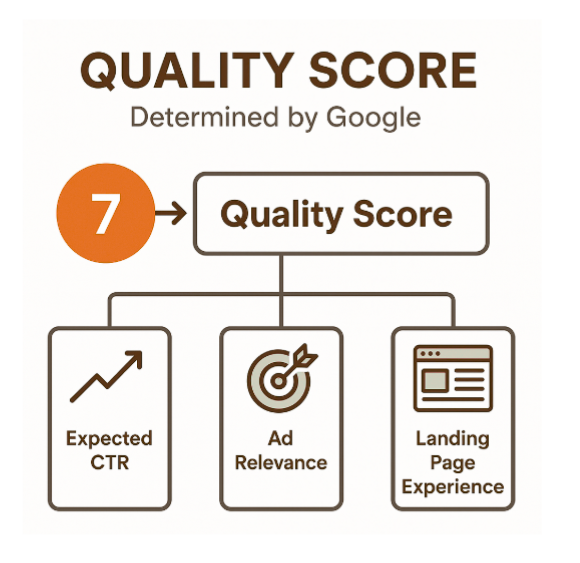
A Novel Introduction to PPC Advertising
PPC, also known as Pay-per-click advertising, is a way in which advertisers have to pay a fee for every time a certain one of their advertisements is actually clicked. This fee is most times up to where the advertising is being hosted on, such as Google Ads. During an attention-based economy like we have right now, this type of advertisement is often a more efficient and approachable manner of promotion compared to opposite “fixed cost promotions”. These can allow a business to directly link the problems they solve, say shoes, to relative keywords—and eventually to direct customers into sales in a coordinated PPC campaign.
How It Works
Functionally, a business begins the process of creating a PPC advertising campaign by bidding for keywords, which will eventually lead to ad placement. These are called “PPC Keywords”. Think of it as when you search up a “language learning free” on any browser, you’ll most likely see a sponsored advertisement from Duolingo. This isn’t the only factor that determines your PPC advertisement’s placement though. An advertisement’s Quality Score is also necessary and is calculated by measuring an ad’s relevance to the searcher’s intent (wouldn’t want to show a funeral advertisement for a search about cat food!), landing page experience (how useful the actual content of your product webpage is), and expected click-through-rate (how likely are people to actually click your link). All of these statistics are estimated by an algorithm, which can be influenced via best practices which will be outlined later in this guide. Ultimately, the mix between a bid amount and quality score will result in an auction between other foreign ads—a process that we will show you how to win.

If you win the auction, you’ll be able to receive and visualize KPIs (key performance indicator), such as CTR, Conversion Rate, allowing an organization to sense how valuable their ROI is on these PPC ads. If for some reason—these aren’t satisfying, further developments can be made.
Benefits of PPC Advertising
The largest reason for the wide-spread popularity of PPC advertisement, is their versatility in payments. An organization can actively decide for a maximum budget, a budget—that only changes whenever an ad is actually clicked. This means that you only actually pay—whenever you have a chance for converting a user towards a product/service. Furthermore, it’s flexible for newer companies, particularly those who can’t compete with larger companies in search engine marketing. This can allow smaller startups to rise up and promote themselves. Testing is also a huge feature—allowing users to track statistics and refine their digital marketing strategies with real-world data. As outlined above, the process of PPC advertisements really isn’t that complex—and can quickly be done, no contracts. Just a bid! The emphasis that these types of promotional methods also have on keywords (direct links to possible customers) is also extremely positive, letting businesses ramp up their conversion rates in the least time possible.
Types of PPC Ads
- Search Ads: These are the most prominent types of promotional methods. These are commonly used whenever advertisers are trying to see what “sticks”—and utilise the keyword-auction process described previously.
- Display Ads: Significantly have less conversion rates than “Search Ads”, due to the fact that these are aimed towards individuals who may be showing that they’re already interested in your product/service. To balance this out, these types of advertisements have much cheaper pay-per-click advertising costs. These are primarily banners or side-bar ads.
- Remarketing Ads: These are essential for reinforcing brand loyalty, as they show up to individuals who have visited your website previously. It allows a company to revisit and transport possible customers into a sales funnel. If you are using Google Ads for this type—image ads may also be shown (say if you’re a shoe brand, your product will be displayed).
- Video Ads: This one’s rapidly increasing, and you’ve probably been annoyed by them, but you can account—that these advertisements do convey a brand’s message. These types of PPC advertisements allow the acquiring of new customer-bases, be it on streaming platforms like YouTube.
- Shopping Ads: This one’s directly for product-based organizations—which puts PPC advertisements on search engines directly with the picture, title, and description. This is highly recommended for product-based companies, due to its immense conversion rate. If a user is able to see a picture and description of a business BEFORE clicking the ad (remember, whenever a user clicks, you have to pay)—if they click, they’re more likely to buy the product itself.
- Paid Social Ads: These are direct paid adverts that charge money to a business whenever a post is interacted with (e.g. liked). Numerous applications use this as a part of their revenue model, including LinkedIn, Facebook, and Instagram. If your target market is more likely to be on social media, this is a great way to directly communicate with them, allowing both for a description and image to be placed as well (even videos!).
- Gmail Sponsored Ads: I’ve sure seen a lot of these—Google Ads directly allows for businesses to advertise themselves right into your email. If a user engages with your email ad, they have the chance to click on your link, and hopefully be converted into a paying customer.
- Amazon Advertising: Amazon is extremely huge, and to make a profit off the popularity, Amazon has allowed businesses to promote their products on top pages via a PPC model. These can include keyword recommendations, header-ads, or product-display ads.
- App Campaigns: These are aimed for mobile-based companies and are essentially needed to boost installs and engagement. These types of PPC campaigns are used in platforms such as Apple Apps. It allows for app images/videos to be displayed as well.
- Local Service Ads: These are primarily based for local businesses—imagine plumbing or tutoring. Google can verify these promotions and serve them in specific regions, with the intent of increasing overall leads.
- Performance Max: This is a large package, in which Google fully automates campaigns across various applications, such as Maps, Gmail, Search, etc. With just a simple prompt of images/videos, Google computes and finds the best placements and audiences for your content. That's an easy time for your money.
Starting a PPC Campaign
- Decide: It’s essential for every business to realize what exactly they’re hoping for from these PPC Ads. More website visits? Installations? Based off these desires, a person can accurately decide what platform and type to use.
- Research: If you’re using Google Ads for search engine marketing, make sure to research what your target market (the people that your product is best aimed for) may search up. Keyword tools like Ubersuggest or Google Keyword Planner are some of the best.
- Create: If not already, actually create whatever you want to direct possible customers to. Make sure to make it relevant but still beneficial for the business to balance a high quality score and business objectives.
- Set Up: This is the longest step. If you’re using Google Ads—you’ll need to organize and submit your campaign objective, overall budget, schedule/devices, ad groups, and finally the actual advertisements (e.g. image/video).
- Launch: Submit the advertisement. Don’t leave it just yet. There’s one more step.
- Measure: The biggest one, make sure to monitor key statistics. No one wants their advertisement to be incorrect or fail. Add a conversion tracking application such as Google Tag Manager, and routinely measure click-through rates, conversion rates, etc. A/B Testing can also be a part of this process.
Conclusion
PPC Advertisements are widely used for a key reason. They’re fast, cheap, and easy to do. No complex contracts. If you’re a bakery, e-commerce brand, or a reputable marketing team—understanding and choosing the different types of PPC advertisement types is essential to maximize ROI. PPC advertising allows for a brand to directly reach the right person at the right time. When they’re actually looking for an answer. Shopping to even social advertisements can often boost conversion rates—to mold and overall, create your digital marketing strategy.
One Click at a Time.
If you want to continue developing your digital marketing strategy, but want to have fun in the meantime: check out Arkire .